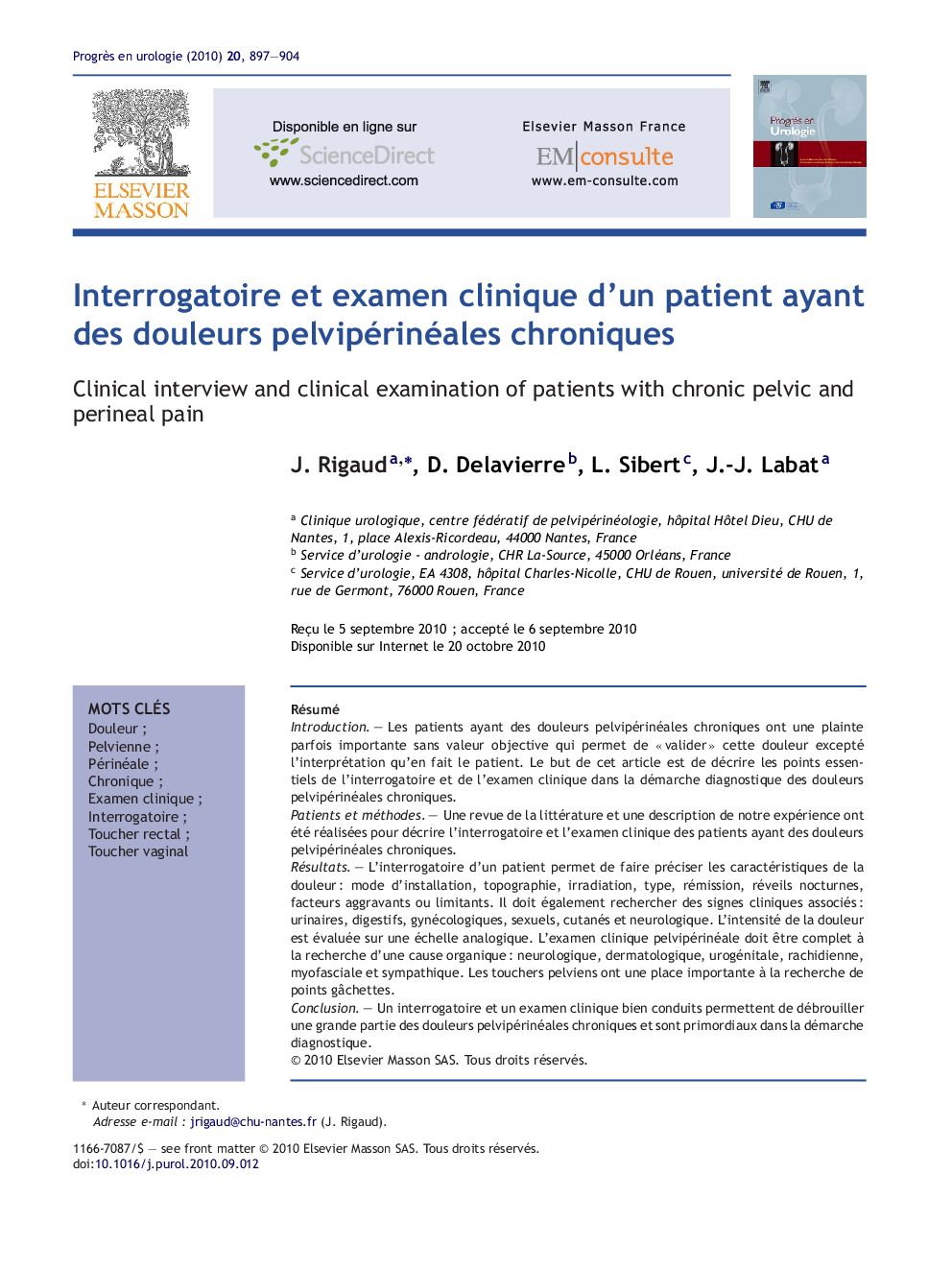| Article ID | Journal | Published Year | Pages | File Type |
|---|---|---|---|---|
| 3823749 | Progrès en Urologie | 2010 | 8 Pages |
RésuméIntroductionLes patients ayant des douleurs pelvipérinéales chroniques ont une plainte parfois importante sans valeur objective qui permet de « valider » cette douleur excepté l’interprétation qu’en fait le patient. Le but de cet article est de décrire les points essentiels de l’interrogatoire et de l’examen clinique dans la démarche diagnostique des douleurs pelvipérinéales chroniques.Patients et méthodesUne revue de la littérature et une description de notre expérience ont été réalisées pour décrire l’interrogatoire et l’examen clinique des patients ayant des douleurs pelvipérinéales chroniques.RésultatsL’interrogatoire d’un patient permet de faire préciser les caractéristiques de la douleur : mode d’installation, topographie, irradiation, type, rémission, réveils nocturnes, facteurs aggravants ou limitants. Il doit également rechercher des signes cliniques associés : urinaires, digestifs, gynécologiques, sexuels, cutanés et neurologique. L’intensité de la douleur est évaluée sur une échelle analogique. L’examen clinique pelvipérinéale doit être complet à la recherche d’une cause organique : neurologique, dermatologique, urogénitale, rachidienne, myofasciale et sympathique. Les touchers pelviens ont une place importante à la recherche de points gâchettes.ConclusionUn interrogatoire et un examen clinique bien conduits permettent de débrouiller une grande partie des douleurs pelvipérinéales chroniques et sont primordiaux dans la démarche diagnostique.
SummaryIntroductionPatients with chronic pelvic and perineal pain sometimes report major complaints with no objective value that help to “validate” this pain other than by the patient's own interpretation of the pain. The purpose of this article is to describe the essential elements of the clinical interview and clinical examination in the diagnostic approach to patients with chronic pelvic and perineal pain.Patients and methodsA review of the literature and a description of our experience was performed to describe the clinical interview and clinical examination of patients with chronic pelvic and perineal pain.ResultsClinical interview of the patient is designed to define the characteristics of the pain: mode of installation, topography, irradiation, type, remission, nocturnal waking, and aggravating or limiting factors. It must also look for associated clinical signs: urinary, gastrointestinal, gynaecological, sexual, cutaneous and neurological. The intensity of the pain is evaluated on an analogue scale. A complete clinical examination of the pelvis and perineum must be performed looking for an organic cause: neurological, dermatological, urogenital, spinal, myofascial and sympathetic nervous system. Digital rectal and vaginal (pelvic) examinations play an important role in the detection of trigger points.ConclusionA well-conducted clinical interview and clinical examination can help to elucidate a large proportion of cases of chronic pelvic and perineal pain and are an essential in part of the diagnostic approach.
